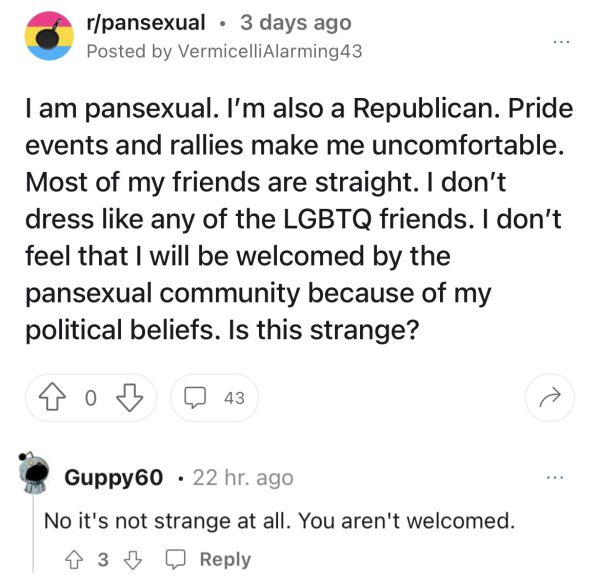Eugenicists need broad centrist support
Now, a lot of people pushing the anti-trans agenda aren’t actually murderers or overt political fascists. The extremists are still the extremists. Moderates sustain these genocidal movements, but they don’t drive them. Unlike the center, the people who rise to the top are always the ones drawn to the movement because of its viciousness. It still matters, though, whether the people towards the middle are willing to help them or not.
It’s still true that legislators and anti-trans activists are not pursuing moderate treatment (psychotherapy, etc); they’re distinctly aiming for obliteration. But that message only works for people who agree with those people openly willing to back genocide outright, or people who can agree with the lampshade.
Even most of the republicans don’t actually know the people they’re voting for are full-on cuckoo-bananas. But the “socially liberal, fiscally conservative” types end up pushing this agenda, even if they’re unaware. People see a ballot where one choice describes a more convenient world for them, and they tick it. They’re not supposed to think about the violence it takes to make that happen.
People like framing the idea of pride like they frame the abolition of slavery or civil rights: as a celebration of a positive political change that happened in history, rather than an ongoing conflict. As soon as pride feels like a conflict, it feels like a conflict they’re on a side of, because they are.

Buying the euphemism
A lot of the people helping propel the cause of genocide don’t actually believe in the case for genocide; the genocidalists depend heavily on people buying the euphemism. That’s another topic I want to do a longer piece on someday, but here’s a brief summary on how rhetoric works on marks.
The mark says they don’t want children to be abused. Now, the people pushing the anti-abuse laws don’t care about children being abused, and their laws don’t prevent abuse, but anti-abuse is the euphemism they’re using to disguise their intents, and the mark agrees with that euphemism, so they think they must agree with the policy. In effect, the fascist hijacks the legitimate cause, just like they hijack institutions.
Even though the marks would, in isolation, be opposed to the real agenda of genocide, they believe enough in the cover story that they show up to support the genocidal cause.
The Shirley Exception
Another key factor in why people support policies they disagree with is the so-called Shirley Exception. Transphobic culture and legislation are both perceived as uncomfortable and inconvenient for a few people — adding some hoops they have to jump through — but they’re usually not seen as being explicitly genocidal.
 The Génocidaires: People
The Génocidaires: People

 Ethical Source is a Crock of Hot Garbage
Ethical Source is a Crock of Hot Garbage
